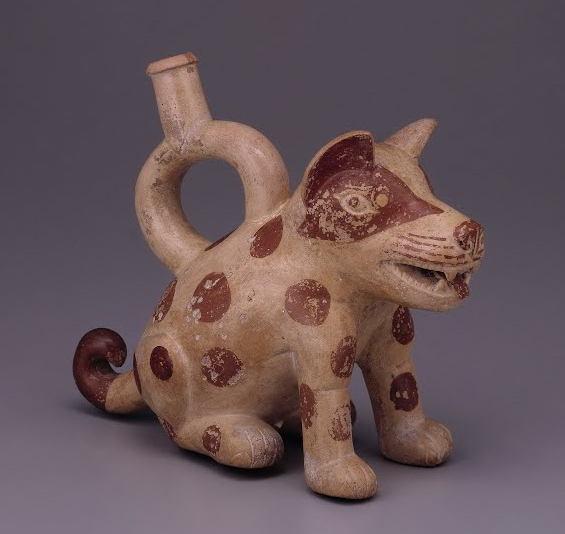When the vessel has a globular shape it has stirrup spouts over the body whereas in the other vessels stirrup spouts are located in the rear or sides.
Moche ceramics are painted in a limited number of colors.
Moche stirrup spout vessels were generally made in two colors.
The moche archaeological culture which thrived along the north coast of peru between 1 100 and 1 700 years ago has received worldwide attention and acclaim for its distinctive and elaborately crafted pottery.
Pottery generally moche ceramics are two colored.
Antique porcelain can be anything from cups saucers plates and decorative items both plain and hand painted to decorative wares.
They used anthropomorphic figures and animal faces and bodies to shape their ceramic.
White on red and black postfire paint are also present to a lesser extent.
Ad 100 750 was a south american society with cities temples canals and farmsteads located along the arid coast in a narrow strip between the pacific ocean and the andes mountains of peru.
Their color pallet was mostly limited to red black and white.
Moche is fairly well defined temporally although its origins are less clear than its demise.
For many years the foundation of moche chronology was a five phase ceramic temporal seriation of moche style vessels established by larco hoyle 1946 1948.
The moche produced large amounts of pottery aided by the use of molds to create large quantities of specific shapes.
Moche potters used molds for the bodies of the pots as well as for attachments or seals which they applied to create decorations in relief.
Mar 15 2016 explore jazz it up ceramics s board ceramic colour charts followed by 210 people on pinterest.
Antique porcelain was made up until 1910.
These colors exhibit a range of hues which became darker in the final phases of moche culture.
The moche culture ca.
Moche vessels are especially well known for their unique stirrup shaped spouts and representational art style depicting humans animals.
Many collectors and antique dealers identify antique porcelain by looking at various types of markings underneath the porcelain itself.
Cream and red brown or brick red.
Nearly all decorated vessels are slip painted and bichrome with red decoration on a white cream background.
The moche or mochica are perhaps best known for their ceramic art.









